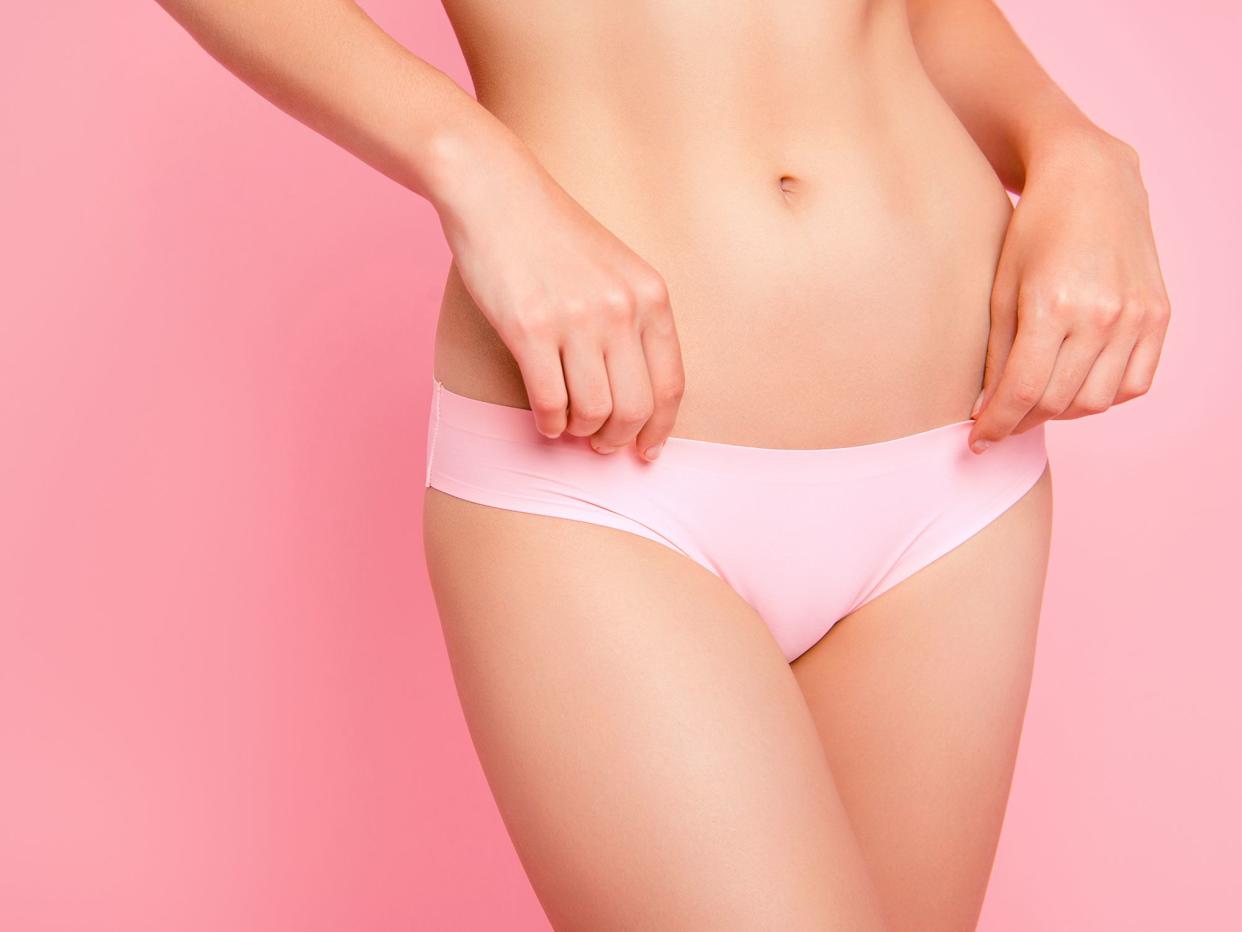Here’s Why Everyone Is Getting Vajacials (And How to Do One at Home)
Ahem, your vulva needs pampering.

Deagreez/Getty Images
Oh how far we’ve come from the days of coy feminine hygiene advertisements and commercials that wouldn’t dare show *gasp* blood on TV! From cleansers and probiotics that target vaginal health to unabashed conversations surrounding female sexual wellness, we’re fortunately in a very different place today than we were even a decade ago.
“People are realizing that discussing these topics ultimately leads to better body literacy and health outcomes,” notes Bri Durkin, a registered nurse at Nakey. “Stigma around these topics creates a sense of embarrassment for women when it comes to addressing their health issues. If we are able to normalize these topics as a society, the easier it will be for people who struggle with any issues to feel empowered about their own bodies and feel comfortable getting help.”
Amid this flurry of revolutionary open dialogue, a new category has emerged within the vaginal care sphere: vajacials. Yep—as in facials for your vagina. From Bushbalm’s Hydrogel Vajacial Mask to Nakey’s Muff Mask, to professional vulva treatments, pampering this area is turning into a rite of womanhood. As silly as the word might sound, and as superfluous as these treatments may seem at first, you shouldn’t write them off just yet.
What Are Vajacials?
You’re probably already familiar with the concept of a facial. A vajacial follows the same detail-oriented level of care for skin but instead focuses attention on your vulva—AKA the outer portion of genitalia.
“There are several ways you can achieve a vajacial, but ultimately it helps cleanse, exfoliate, soothe, and moisturize irritation and hyperpigmentation of the skin,” Durkin explains. “A mask is one of the key final steps in a vajacial.”
Because your vagina is healthiest at a certain pH level—it’s slightly acidic at about 3.8 to 4.5—and because your vulva is so close to the vagina itself, it’s important to use products formulated specifically for this area. This keeps the area healthy and balanced.
In-Office Versus At-Home Vajacial
You can treat yourself to a self-administered vajacial at home or have one done professionally. Either can be completely customized to your specific concerns, which include everything from post-waxing ingrown hairs (folliculitis) to keratosis pilaris to discoloration to simple moisturization.
The ultimate goal of a vajacial is to improve comfort, health, and appearance of the skin in this area. If you’re completing a vajacial at home, it might look like a cleanse with a pH-balanced product, followed by gentle exfoliation and then a soothing moisturizing mask.
Similar to at-home versus in-office facials, a professional vajacial takes the treatment up a notch. And since the area can be hard to reach, it can make for a more thorough treatment.
“Generally, [professional] vajacials include a deep cleanse, peel or Brazilian wax, treatment masks, and moisturizers,” says Andrea Escoboza, an esthetician at the VSPOT Medical Spa in New York City. “At VSPOT, we use clinically proven products with medical-grade ingredients to enhance each step and tailor treatments for all skin types.”
An in-office vajacial also allows you to incorporate additional therapeutic treatments, such as steams, tightening, and microneedling. While a professional vajacial is considered a luxury treatment, similar to a salon facial, let’s not discount the fact that skin disorders and complications aren’t exclusive to the face. Vajacials can help manage or correct these concerns on your vulva.
How to Do Your Own Vajacial At Home
If you prefer to do your own vajacial in the comfort of your home, we totally get it. Here’s a quick step-by-step guide from Dr. Ruth Arumala, an OB/GYN with BushBalm.
Step One: Cleanse. Wash your vulva with a gentle cleanser approved for feminine hygiene. Some good options include The Honey Pot’s Sensitive Wash and Love Wellness pH Balancing Cleanser.
Step Two: Groom. Grooming your vulva looks different for everyone. Some prefer a full shave or wax, while others like a light trim. Bushbalm’s waterproof Francesca Trimmer is a compact size that’s easy to use.
Step Three: Exfoliate. There’s a world of vulva exfoliators out there ranging from physical scrubs (e.g. BushBalm’s Nude Ingrown Hair Exfoliating Scrub) to exfoliating pads (e.g. SweetSpot Labs Buff & Brighten AHA/BHA Body Exfoliating Pads).
Step Four: Vulva Check. Use a mirror to examine the skin around your vagina, says Dr. Arumala. We seldom take time to examine this area, so be thorough. Look for any ingrown hairs to treat/watch, and any lesions, rashes, or spots that you may want a doctor to examine.
Step Five: Hydrate & Soothe: Use a moisturizing balm, sheet mask, and/or oil as the final step of your vajacial. Some good options include Two L(I)Ps Pout Hyaluronic Acid Hydrating Serum, Muff Mask The Soother Mask, and Bushbalm’s Pina Colada Dark Spot Oil.
“I hope the trend of intimate health awareness becomes more than a conversation because it has empowered women to accomplish their wellness goals,” says Cindy Barshop, founder of VSPOT. “It’s entered the zeitgeist because of the recent rise in female podcasters, writers, and educators joining social media platforms and discussing personal experiences publicly. It’s created spaces where women can not only discuss vaginal health but find real solutions and helpful products.”
For more Real Simple news, make sure to sign up for our newsletter!
Read the original article on Real Simple.
